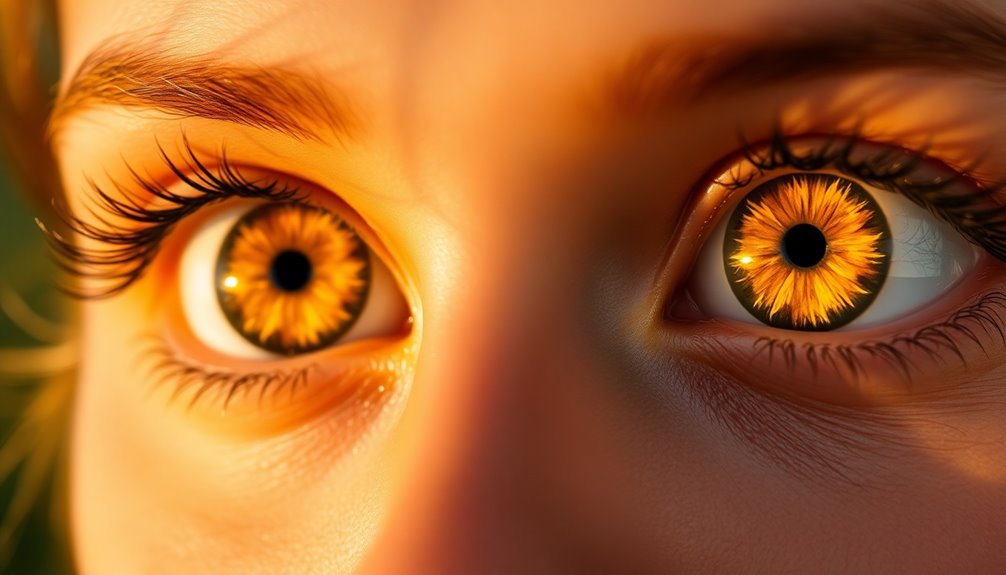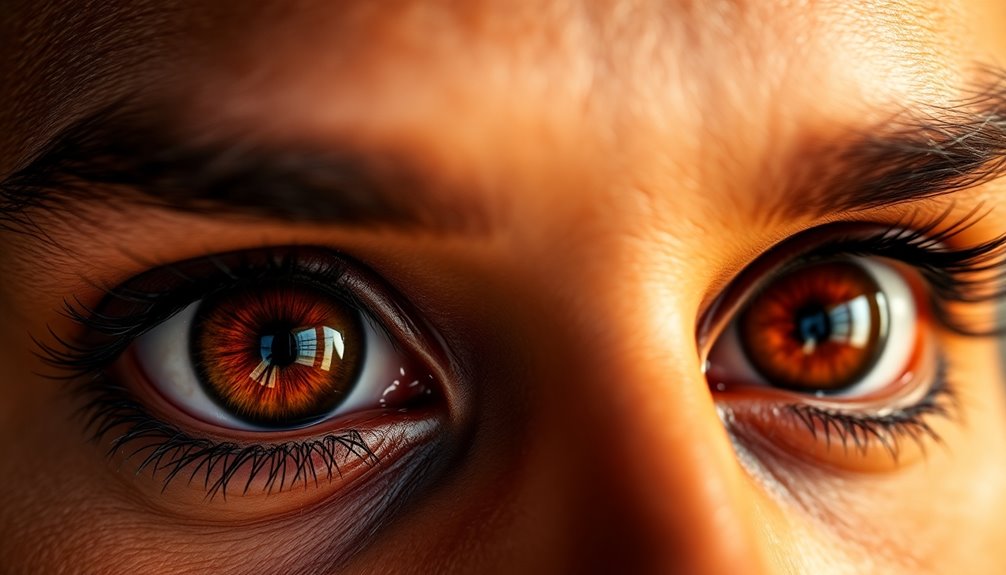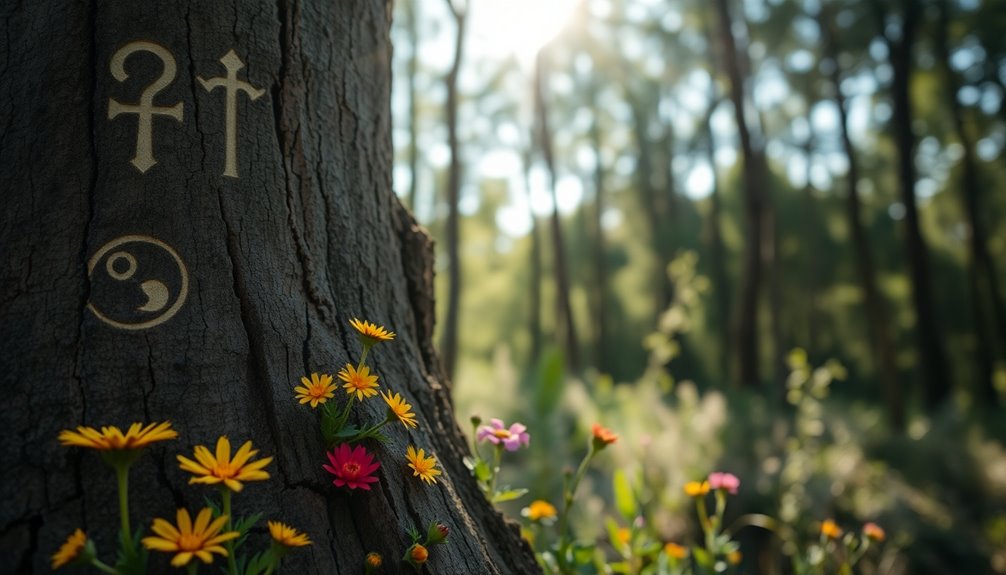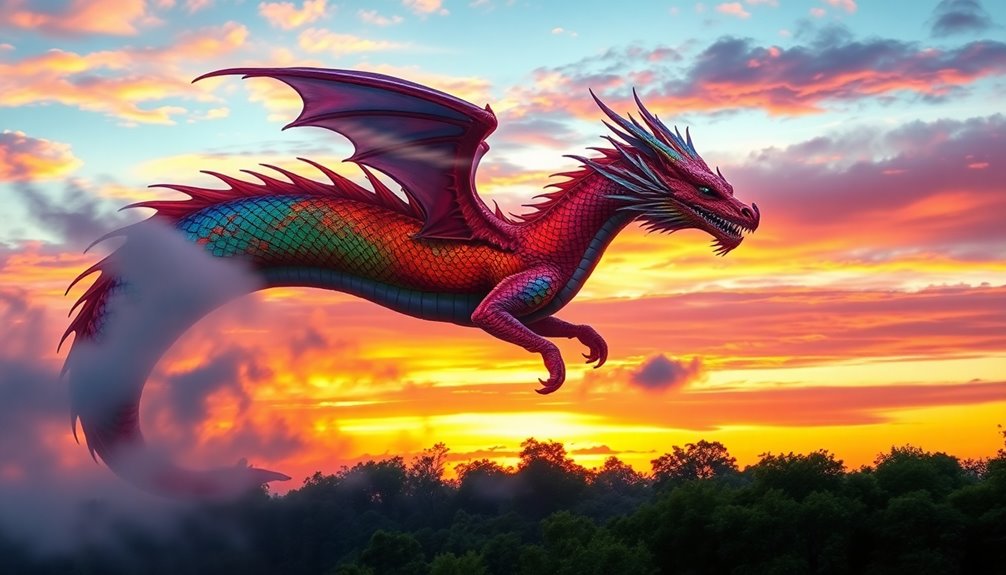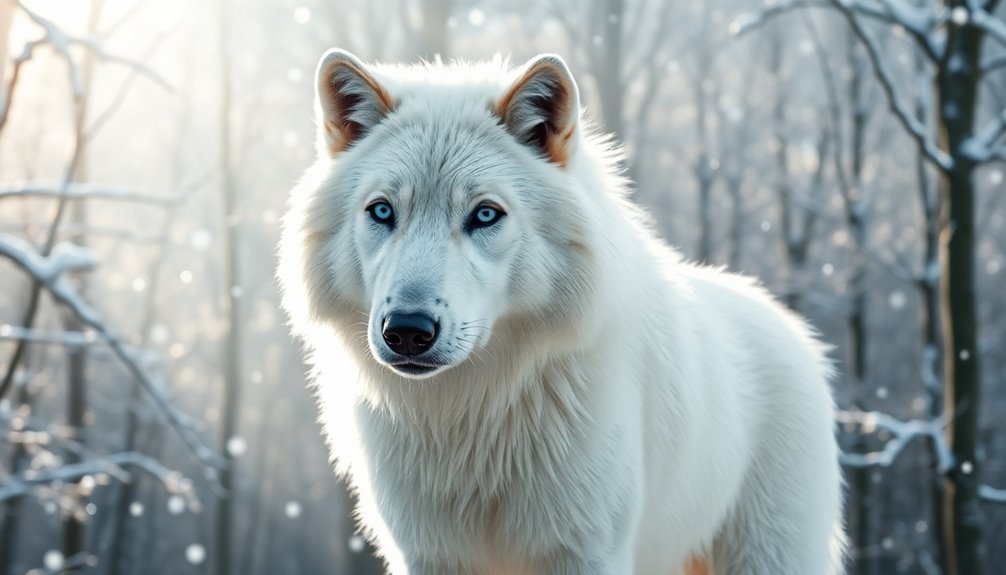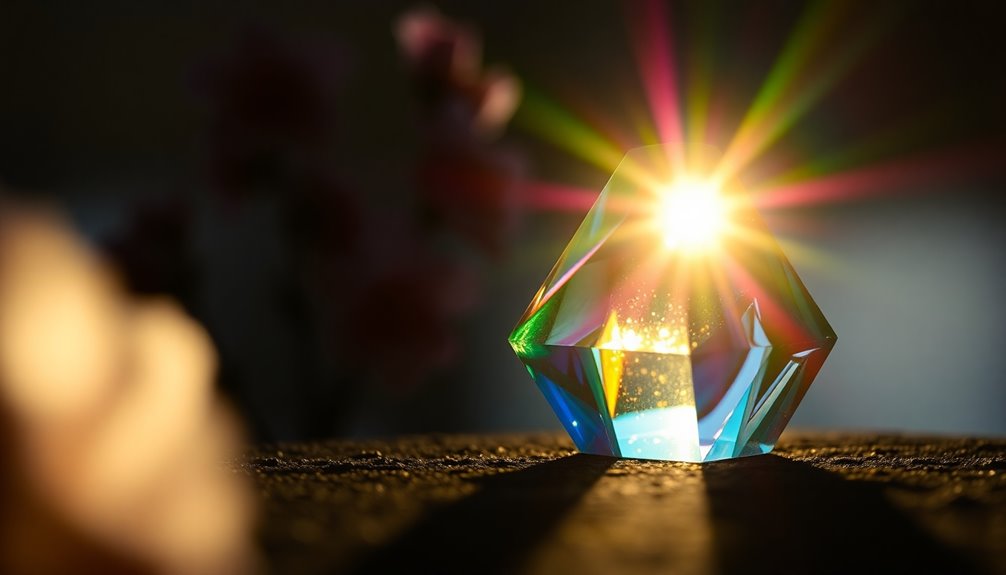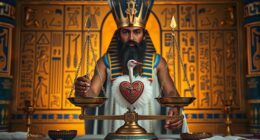Yellow eyes captivate with their striking brightness, symbolizing transformation and hidden potential. They often hint at a character's duality, combining allure and deception. In various cultures, yellow eyes represent nobility and wisdom, connecting to divine origins and unique abilities. You'll notice that these characters frequently embody the trickster archetype, leading to unpredictable turns in their stories. Gold eyes can mark significant metamorphoses, indicating shifts in power or identity. If you're intrigued by the deeper meanings and iconic examples of this fascinating symbolism, you'll find even more interesting insights up ahead!
Key Takeaways
- Yellow eyes symbolize complexity in character transformations and hidden potential, often indicating significant shifts in identity and abilities.
- In various cultures, yellow eyes represent nobility, wisdom, and divine characteristics, enhancing understanding of a character's extraordinary powers.
- Characters with golden eyes frequently embody trickster traits, showcasing cleverness, unpredictability, and the capacity for manipulation.
- Eye color transformations to gold often signify metamorphosis, reflecting themes of shapeshifting and evolution in character arcs.
- Iconic media examples highlight yellow eyes as visual cues for supernatural origins, control, and the interplay of life and death.
Characteristics of Gold Eyes
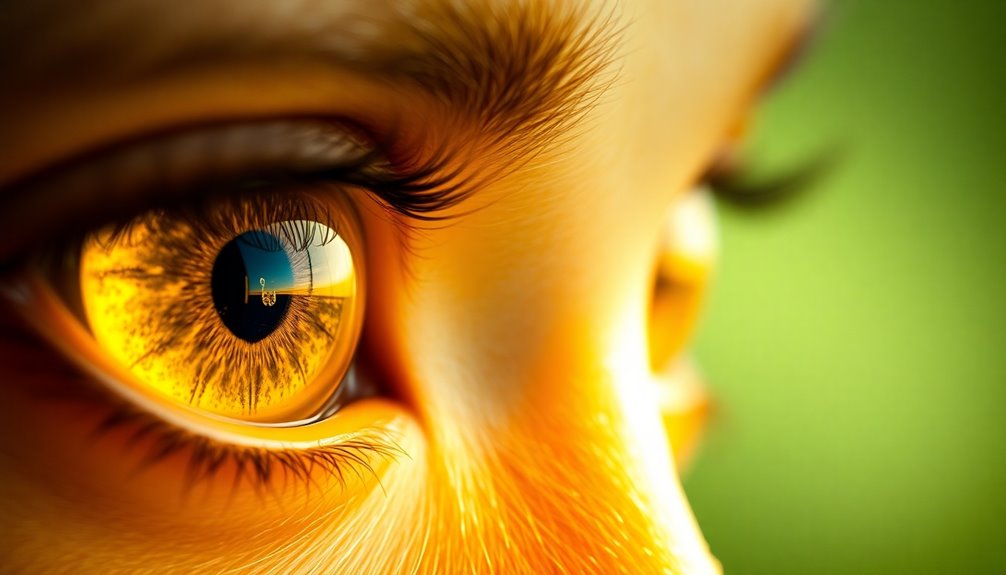
When you encounter characters with gold eyes, you often notice they embody a unique blend of qualities that set them apart. These striking features typically signify supernatural origins, hinting at their unique abilities and hybrid lineage.
In many Western narratives, characters with gold eyes are linked to feline or lupine traits, portraying them as tricksters or powerful entities. Japanese folklore deepens this connection, associating gold eyes with kitsune, the mythical fox spirits known for their shape-shifting abilities.
This gives characters with gold eyes a fascinating duality, allowing for dramatic transformations that captivate audiences. Gold eyes act as a vital visual cue in storytelling, alerting you to a character's true nature or potential for change.
For instance, in series like *Attack on Titan* and *Black Butler*, these characters exhibit extraordinary powers that reflect their unique backgrounds. The gold eyes serve as constant reminders of their extraordinary capabilities and the rich folklore that surrounds them, enriching your understanding of their roles in the narrative.
Ultimately, gold eyes are more than just a visual trait; they carry the weight of heritage and the promise of transformation.
Cultural and Mythological Significance
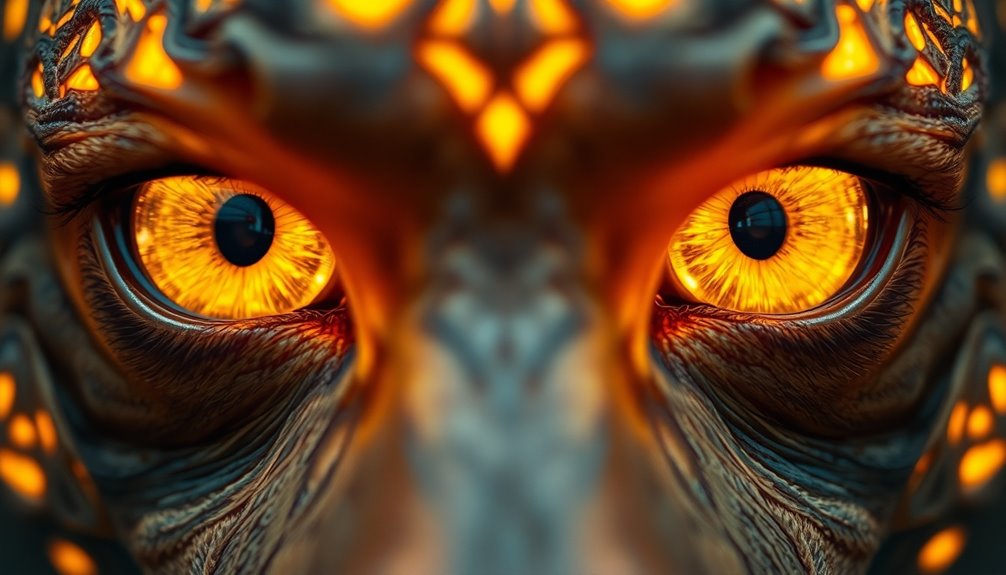
Across various cultures, yellow eyes carry deep symbolic meanings that often link them to nobility and divine characteristics. Their rarity and brightness have made them a symbol of royalty and deities throughout history. You might find it intriguing that ancient myths frequently attribute yellow eyes to mystical beings, enhancing their association with wealth, wisdom, and exceptionalism.
Here's a quick look at some cultural beliefs surrounding yellow eyes:
| Culture | Symbolism | Associated Traits |
|---|---|---|
| Ancient Egypt | Divine protection | Nobility, Wealth |
| Norse Mythology | Wisdom and foresight | Mystical beings |
| Asian Traditions | Positive energy and liveliness | Creativity, Positivity |
| African Folklore | Guardianship and prosperity | Protection |
These beliefs highlight how yellow eyes can symbolize positivity and protection, reflecting their perceived power to attract good fortune. Additionally, artistic representations of yellow eyes convey complex emotions, showcasing a duality that can range from joy and brightness to deceit and danger. Such rich meanings make yellow eyes a enthralling subject in cultural and mythological contexts.
Iconic Examples in Media
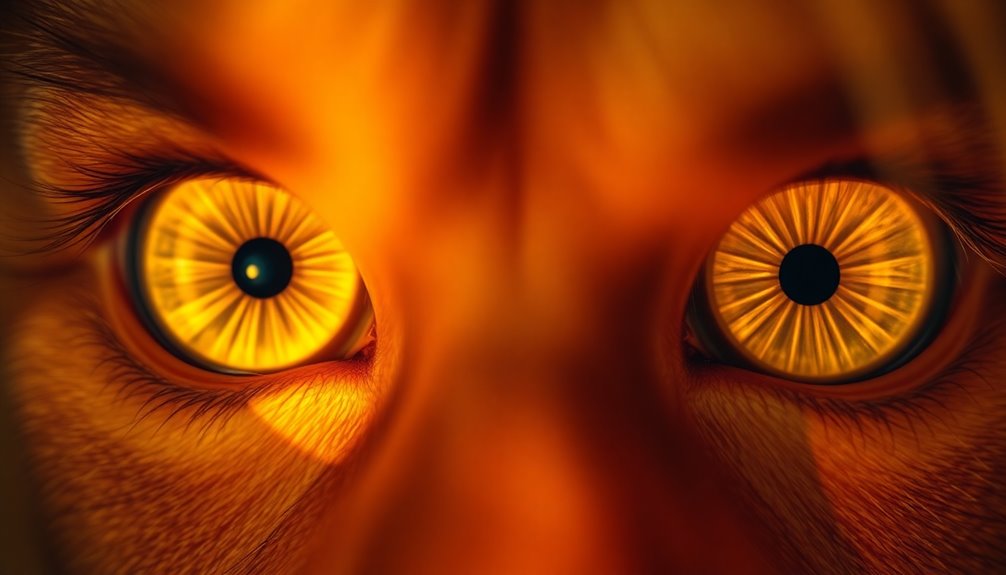
Yellow eyes often captivate audiences in various forms of media, serving as powerful symbols that enhance character depth and narrative intrigue. These golden gazes signify more than just visual flair; they often embody supernatural elements and the complexities of their characters.
- In *Attack on Titan*, the Armored Titan's glowing gold eyes reveal its true identity, deepening the mystery surrounding the character.
- Characters in *Black Butler* possess gold or green eyes, marking them as divine shinigami, a reflection of their heavy responsibilities and supernatural origins.
- C.C. from *Code Geass* showcases distinctive gold eyes that symbolize her immortality and unique powers, setting her apart from other characters and enriching her enigmatic presence.
Through these iconic examples, golden eyes demonstrate their ability to signify control, transformation, and the interplay between life and death.
They invite you to explore the layers of each character, revealing their hidden truths and the mysteries they embody. As you immerse yourself in these narratives, keep an eye on those striking gazes—they often hold the key to understanding the complex worlds these characters inhabit.
Transformations and Power Indicators
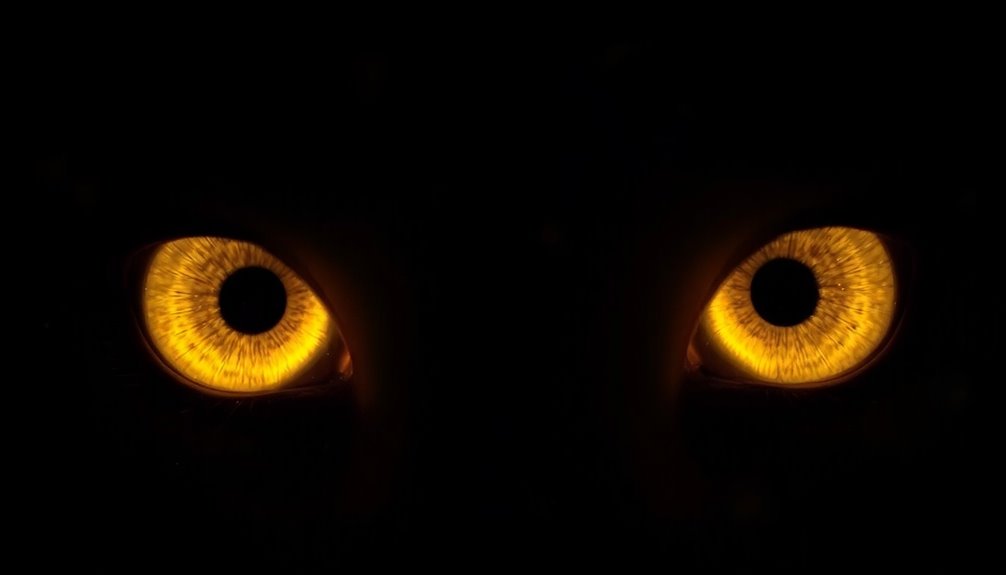
When you notice a character's eyes shifting to gold, it often signals a significant transformation or power surge.
These eye color changes serve as indicators of their evolving identity and abilities, showcasing themes of shapeshifting and strength.
As you explore these transformations, you'll see how they reflect the characters' journeys and the depths of their powers.
Eye Color Transformation Significance
Eye color transformations are a striking narrative device, often marking a character's evolution or shift in power. When a character's eyes turn to gold, it's not just a visual change; it symbolizes profound identity shifts and supernatural abilities. You can almost feel the tension as the story unfolds, revealing deeper layers of the character.
Consider these vivid moments:
- Yoko Kurama's Transformation: His golden eyes reflect immense power and a dramatic shift in capability.
- Madoka's Ascension: When her eyes change to gold, it signifies her rise to godhood, showcasing her ultimate potential.
- Fai's Vulnerability: In *Tsubasa -RESERVoir CHRoNiCLE-*, his golden eyes reveal a moment of profound loss, marking a pivotal decline in power.
These eye color transformations serve as compelling character reveals, highlighting not just enhanced power levels but also moments of vulnerability.
They encapsulate the duality of strength and fragility within a character's journey. Whether it's a rise to greatness or a fall from grace, golden eyes evoke a powerful visual cue, reminding us how much lies beneath the surface.
Indicators of Character Power
Often, characters reveal their power through striking transformations, particularly in their eye color. Golden eyes serve as powerful visual indicators of a character's transformation and status.
Take Fai from *Tsubasa -RESERVoir CHRoNiCLE*; his eyes turn to gold after losing his magic, showcasing how eye color can reflect a change in ability. Similarly, Yoko Kurama in *YuYu Hakusho* transforms into an alter ego with golden eyes, emphasizing the link between his newfound power and this eye color shift.
In *Hekikai No Aion*, Seine's greenish-gold eyes signify her status as a 300-year-old immortal, additionally illustrating the connection between eye color and extraordinary abilities.
When Madoka ascends to godhood in *Puella Magi Madoka Magica*, her eyes also turn gold, marking a significant elevation in her power.
Moreover, the Magitek Type Zero cyborgs in *Magical Girl Lyrical Nanoha* exhibit golden eyes while utilizing their supernatural abilities, reinforcing the magical implications of eye color transformations.
These examples highlight how golden eyes act as compelling indicators of character power, signaling transformations that elevate characters into domains of strength, immortality, and supernatural prowess.
Shapeshifting and Identity Themes
Through gold eyes, characters embody themes of shapeshifting and identity, illustrating their transformations and the power that comes with them. These striking color changes often signal profound shifts in their essence, hinting at their supernatural heritage or abilities.
- Yoko Kurama's golden gaze reveals his hidden strength, marking a pivotal transformation in *Yu Yu Hakusho*.
- In *Magical Girl Lyrical Nanoha*, the Magitek Type Zero cyborgs' gold eyes symbolize the fusion of human and machine, showcasing their enhanced power.
- Makima's gold eyes in *Chainsaw Man* signify her ability to manipulate others, emphasizing the connection between identity and control.
The symbolism of gold eyes transcends mere aesthetics; it captures a character's journey of transformation and identity.
When characters like Madoka in *Puella Magi Madoka Magica* change eye color to gold, it signifies an ascension to godhood, reinforcing the theme of power linked to identity.
Meanwhile, Guilmon's yellow eyes in *Digimon Tamers* hint at his unique, feral traits, emphasizing the dynamic interplay of shapeshifting and identity.
In every instance, gold eyes serve as a powerful reminder of the complexities within character transformations.
Tropes and Unique Interpretations
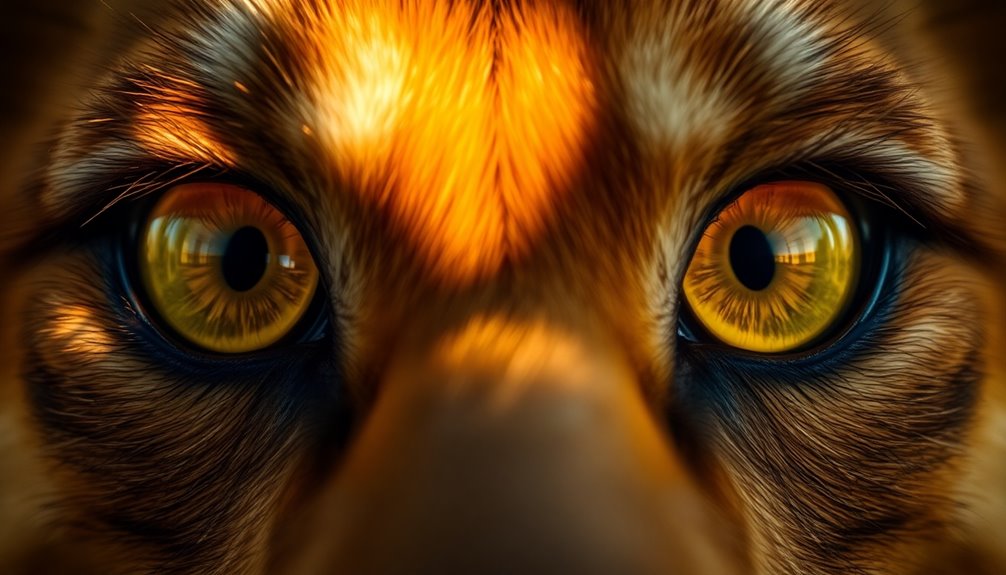
When you notice yellow eyes in a character, it often hints at their role as a trickster, adding layers to their personality and motives.
These visual cues not only enhance storytelling but also set them apart in a sea of characters, making their presence unforgettable.
As you explore various narratives, keep an eye on how yellow eyes shift in meaning and significance.
Trickster Archetype Representation
In the domain of storytelling, the trickster archetype stands out for its cleverness and unpredictability, often embodied by characters with striking yellow or gold eyes. These characters manipulate their surroundings, using cunning and charm to achieve their goals. The symbolism of yellow eyes speaks to their dual nature, highlighting both allure and deception.
Consider these vivid representations:
- Loki from Norse mythology – A master manipulator, his gold eyes reflect his cunning nature and penchant for chaos. This reflects the importance of open communication in understanding complex relationships.
- Kitsune from Japanese folklore – These fox spirits shapeshift and deceive, their yellow eyes hinting at their complex relationships with humans.
- Makima from *Chainsaw Man* – This character utilizes her golden gaze to conceal her true intentions, embodying the trickster's charm mixed with menace.
In various narratives, these characters enhance the story's depth, allowing audiences to engage with hidden motives and the unpredictable twists of fate. Additionally, the trickster archetype often serves as a catalyst for change, pushing other characters towards personal growth and transformation.
Visual Cues in Narratives
Visual cues, like yellow eyes, play an essential role in narratives by signaling a character's supernatural traits or hidden identities. These striking features often indicate a character's supernatural origins and hint at unique abilities.
In anime and manga, you might notice that characters with yellow eyes—like those in *Black Butler* and *Chainsaw Man*—embody trickster traits or possess unexpected powers, enhancing their allure.
Character metamorphosis is another common theme associated with yellow eyes. When a character's eye color shifts to gold or yellow, it typically signifies their change to a more powerful or otherworldly state. This transformation often leads to dramatic reveals and plot twists, allowing you to recognize a character's true nature or latent powers before they do.
Moreover, the symbolism of yellow eyes adds thematic depth to the narrative. Across various cultures, they can represent nobility, wisdom, or hidden knowledge, enriching character development.
Musical Symbolism in Lyrics
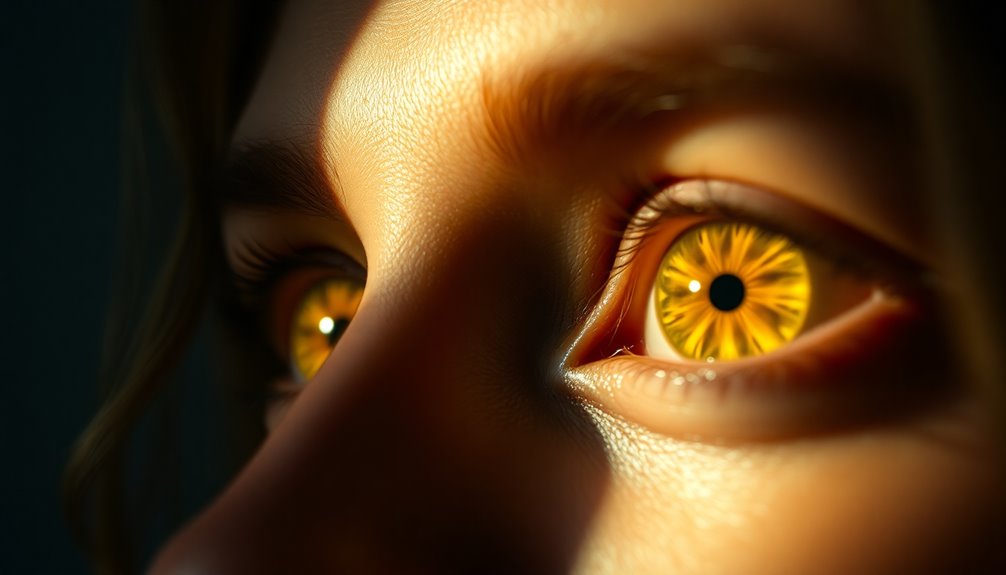
Musical symbolism in lyrics serves as a powerful tool for artists to convey deeper meanings and emotions. In Rayland Baxter's song "Yellow Eyes," the imagery of yellow eyes symbolizes a past romantic connection, stirring feelings of nostalgia and longing. You'll find that the lyrics explore themes of heartache and personal reflection, crafting a vivid narrative that resonates with your own experiences.
Consider how these elements come alive:
- The allure of yellow eyes, capturing fleeting beauty in a relationship.
- The bittersweet memories that linger, encapsulating emotional complexity.
- The profound storytelling that immerses you in the journey of self-discovery.
As you listen, you'll recognize how the phrase "it's all in your head" emphasizes introspection, inviting you to reflect on your own memories. The song unfolds the impact of romantic relationships on personal identity, illustrating how love can shape who you are, much like the role of fat-soluble vitamins in maintaining overall health. Moreover, the intricate narratives within music often mirror the sound recording techniques used to capture emotions authentically. Additionally, the act of visualization techniques can enhance your experience of music by allowing you to vividly imagine the stories being told. In this context, the use of analytical cookies in understanding audience engagement can further enrich the appreciation of such musical expressions.
Through poignant storytelling, Baxter navigates the intricate dance of emotions tied to love's transient nature, connecting deeply with listeners. In this way, musical symbolism enriches the experience, allowing you to relive those moments of beauty and heartache. Moreover, just as in family photoshoot fails, the unexpected twists in relationships often lead to cherished memories that define our personal narratives.
Frequently Asked Questions
What Does a Yellow Eye Symbolize?
When you think about yellow eyes, they often symbolize nobility and wealth across cultures. Their rarity can signify exceptionalism, linking them to royalty and divine traits.
You might also see yellow eyes as representing wisdom and creativity, reflecting quick-thinking and energy.
However, interpretations vary; while they may suggest positivity and good luck, they can also carry darker meanings, such as deceit or danger, depending on the context in which you encounter them.
What Does It Mean When Your Eyes Are Golden Yellow?
When you see someone with golden yellow eyes, it's like catching a glimpse of sunlight breaking through the clouds—rare and enchanting.
Golden yellow eyes often signify a spark of creativity and quick thinking. You might attract positive energy and good fortune, embodying traits of liveliness and joy.
However, keep in mind that perceptions can vary; some might interpret those striking eyes as a warning, hinting at underlying deception or danger.
What Do Golden Eyes Symbolize?
Golden eyes often symbolize supernatural traits or hidden powers within a character. When you see someone with golden eyes, it usually hints at their potential for transformation or unique abilities.
This eye color can represent a duality, suggesting a trickster nature rather than outright malice. You might notice that characters with golden eyes often play complex roles, embodying both light and shadow, which adds depth to their stories and moral alignments.
What Do Yellow Eyes Indicate?
Yellow eyes often indicate uniqueness and an extraordinary nature.
You might associate them with qualities like nobility, wealth, and wisdom. When you see someone with yellow eyes, it can suggest they possess a rare insight or creativity, making them stand out in a crowd.
Additionally, these eyes can evoke a sense of mystery or even villainy, hinting at hidden powers or traits that set the individual apart from others.
Conclusion
In a world where eyes are windows to the soul, those golden gazes whisper secrets of wisdom and power. They invite you to explore the depths of their brilliance, revealing the beauty hidden beneath. As you navigate the domains of culture and creativity, remember that these vibrant hues can signify transformation and insight. Embrace the warmth of their glow, for in their light, you might just find a guiding star illuminating your own path.

